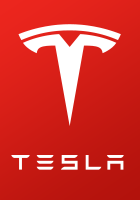There has been several reports recently of competitors developing BEVs with LG Chem and Samsung batteries with cells that are said to be much bigger than Teslas "giga factory cell". Korean Batteries? Ford To Spend $4.5 Billion In EV - Asia Stocks to Watch - Barrons.com
On Samsung's homepage it said they are prismatic:
Automotive Battery - High Voltage Battery Systems | Samsung SDI
How can Tesla, Samsung and LG Chem come to such vastly different conclusions of what the optimal battery is?
On Samsung's homepage it said they are prismatic:
Automotive Battery - High Voltage Battery Systems | Samsung SDI
How can Tesla, Samsung and LG Chem come to such vastly different conclusions of what the optimal battery is?


